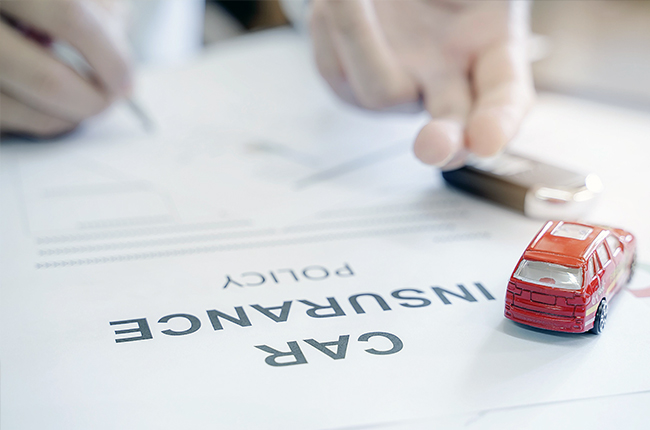
While having insurance for your vehicle is great to have, there will come a time wherein you might want to change your insurance policy for it. This can stem from a number of reasons such as an increased premium or due to the changing needs for your vehicle. With that in mind, we have created a quick guide to help you understand what steps you will need to take when switching to a new auto insurance provider.
Canceling your existing insurance policy

Before you go out and start looking for a new insurance policy for your vehicle you must first cancel its existing one. In order to do this, you will need to first check on the cancellation requirements as many insurers will make you pay a cancellation or administration fee. It is important to note that during the “cooling off period” which is usually anywhere from 10 to 30 days depending on the company there should be no extra fees involved if you wish to cancel.
During this period you can contact the company or your agent to see if there are any available discounts that are up for grabs. Availing of these discounts could potentially lower your overall cost. If the discounts presented to you aren’t enough to make you stay with the carrier, then you can proceed with the cancellation process.
If you want to cancel your policy there are certain ways to go about it. Initially what you can do is to stop paying the insurance premiums. However, make sure to write an accompanying letter to the insurer indicating that you want to cancel your policy. Some policies detail in their contracts that issuing a stop-payment order is needed before you can officially stop paying the premiums. You can also call your provider and start the cancellation process for your policy. It is important to remember that plans will have their own specific ways of canceling, what has been mentioned are the general ways of doing it.
Consider your coverage options

With your previous plan canceled it’s now time to search for new coverage options. The process of looking for a new insurance provider begins anew in which you will need to do your research again. Remember the reasons why you canceled the initial policy in the first place and work from there to find another one that better matches your needs. Make sure that you research the different kinds of insurance coverage, as this will help you find a better policy.
Find out if there will be extra fees and penalties

Now that your previous car insurance policy has been canceled or is in the process of being canceled, it’s now time to account for the fees and penalties. Find out if there are any penalties you might incur for changing to a new policy before the end of the coverage period. Auto insurance companies will generally give you the right to cancel your policy at any time so long as you give them the proper notice.
While most insurance companies will likely refund your unused premium, some may charge if you chose to cancel in the middle of your policy term. Before you fully commit to canceling your policy it is best to consult with the company’s customer service department or to ask your agent to find out if there are any specific cancellation stipulations.
In the event that you find out that you will be charged a lot for canceling your auto insurance policy, you may want to reconsider your switch if the penalties end up being too high. In this case, you can try and look for a policy that will make up for any cancellation fees charged by your old provider.
Compare insurance quotes from different carriers

As you are now searching for a new auto insurance provider, one of the first things you might want to do is to get quotes from several different carriers. This will allow you to compare auto policy premiums, coverage options, and discounts. When comparing make sure that the plans you get are similar to one another so you get an apples-to-apples comparison.
When getting quotes from the companies be prepared with some basic information to get a more accurate estimate. You will need to provide the following information:
-
Address where the car will be stored
-
Car year, make, and model
-
Its VIN
-
Driver’s license and other government-issued IDs
Make sure to also research if there are any available discounts you can take advantage of. Asking for discounts could help you find a much cheaper coverage plan.
Research on the new company
After you have compared quotes and found a new policy that best fits your needs it’s now time to research the company. Find out how their process works and if it will be easy for you to do an insurance claim in the event that you will need it. If everything checks out you can proceed to apply for your new auto insurance policy.
Avoid lapses in coverage
When switching over to a new policy, the best time to do it is just before your current policy expires. This will help prevent you from having a gap in your coverage. As much as possible even during the switch, your vehicle still should be insured. A lapse in coverage could lead to serious legal and financial challenges especially if you are involved in an accident while your vehicle is not covered. If you end up in an accident and do not have insurance, you will be responsible for the damages done to your car. These might even include other expenses such as medical bills.
Latest Features
-
The 6 things every Ford Ranger must pass before it leaves the factory / Featured Article
Every Ford Ranger, from the base model to the Ranger Raptor, goes through a full inspection process before it leaves the factory. This includes six steps that make sure it’s ready to drive a...
-
Which GAC AION EV is best for your everyday lifestyle? / Featured Article
The GAC AION lineup has something for everyone, maybe you're after space, speed, or just a smooth city drive. Here's a quick breakdown of which model might work best for your day-to-day life...
-
The AutoDeal Awards 2024: Celebrating excellence in the auto Industry / Featured Article
The AutoDeal Awards 2024: Celebrating excellence in the auto Industry
Popular Articles
-
Cheapest cars under P700,000 in the Philippines
Jerome Tresvalles · Sep 02, 2024
-
First car or next car, the Ford EcoSport is a tough package to beat
Jun 18, 2021
-
Car Maintenance checklist and guide – here’s everything you need to know
Earl Lee · Jan 12, 2021
-
Most fuel efficient family cars in the Philippines
Bryan Aaron Rivera · Nov 27, 2020
-
2021 Geely Okavango — Everything you need to know
Joey Deriquito · Nov 19, 2020
-
Family cars in the Philippines with the biggest trunks
Sep 20, 2023
-
Head to head: Toyota Rush vs. Suzuki XL7
Joey Deriquito · Oct 28, 2020
-
Why oil changes are important for your car
Earl Lee · Nov 10, 2020
-
2021 Kia Stonic — What you need to know about it
Joey Deriquito · Oct 16, 2020
-
Top 7 tips for buying a used car in the Philippines
Joey Deriquito · Nov 26, 2020



